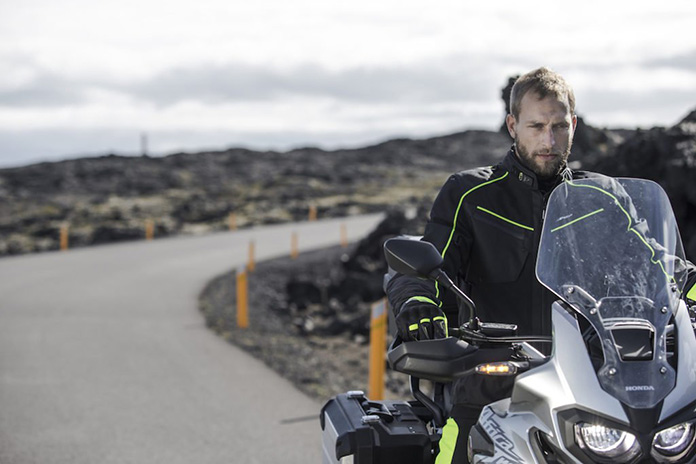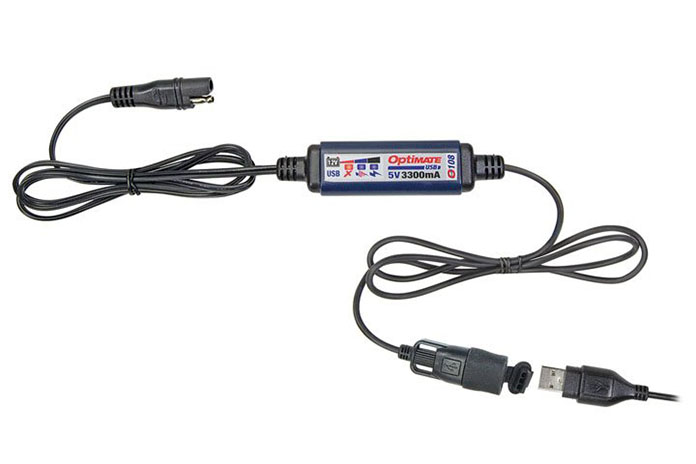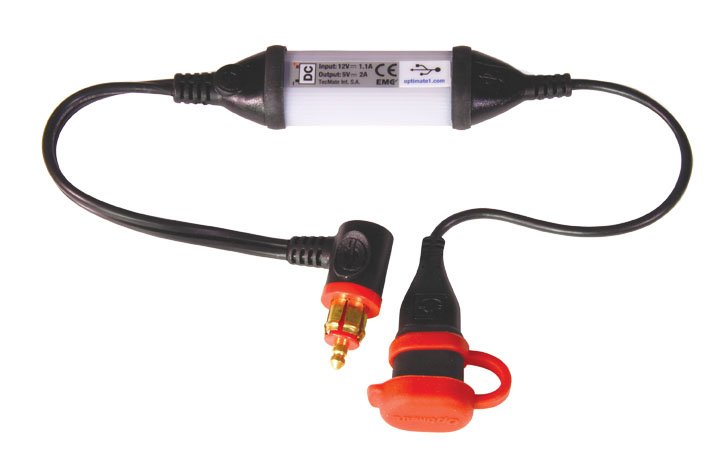OptiMate guide to winter battery care
 Winter attacks your motorcycle’s battery on lots of different fronts. As the temperature drops, the chemical reaction inside the battery slows down, reducing its capacity and its ability to accept a charge. Add to that the increased strain you’re putting on it with increased use of headlight and auxiliary/fog lighting, heated grips and clothing and you’re heading for battery failure.
Winter attacks your motorcycle’s battery on lots of different fronts. As the temperature drops, the chemical reaction inside the battery slows down, reducing its capacity and its ability to accept a charge. Add to that the increased strain you’re putting on it with increased use of headlight and auxiliary/fog lighting, heated grips and clothing and you’re heading for battery failure.
Even if you don’t use your bike very often through the winter months, charge is lost due to alarms / immobilisers, clocks and on-board computers and through self-discharge – the battery uses a little of its own energy every day to keep itself alive.
A proper long-term battery care routine is vital to keep performance at its optimum throughout the cold months.
Regularly charging and maintaining your battery not only keeps it working to maximum capacity, it can also double its working life, as well as significantly reducing the likelihood of failure.
Optimise with OptiMate
Recommended by most major motorcycle manufacturers, OptiMate chargers and optimisers can maintain, test, charge and even repair a bike’s battery, all completely automatically.
All OptiMate chargers run a unique ‘connect and forget’ 24hr, 7 days-a-week, 365 days-a-year programme, so they can and should be connected to your bike’s battery and left to do their work – no user input required. The battery is checked and topped up hourly and a desulphation pulse is delivered to keep all the plates 100% ship-shape.
Featuring easy-to-read displays, they keep you updated with progress and battery condition too.
To get the best out of your OptiMate charger/optimiser, follow these steps:
1. Select the right charger/optimiser
It’s crucial to use the correct charger/optimiser for the type of battery. Obviously, a 6V battery should only be charged with a 6V charger, and a 12V battery with a 12V charger. If you have both, OptiMate 5 VoltMatic automatically selects the right voltage for the battery and it can even save 6 Volt batteries.
Also recognise what kind of biker you are. If you always remember to hook up your charger whenever you park the bike, then the OptiMate 1 or 2 maintainers will do the job, but if you are the forgetful type and want industry leading ‘battery saving insurance’, an OptiMate 3 or 4 is the right charger for your 12V lead-acid battery.
The same goes for CAN-Bus-equipped machines. Not all systems and chargers are compatible – BMW’s system, for example, ‘switches off’ the 12V socket when the ignition is turned off, breaking the connection to the battery. For continuous and unsupervised maintenance, the charger must know how to communicate with the system to connect to the battery. The OptiMate 4 CAN-bus knows exactly how to so it can perform its hourly ‘no supervision required’ test and maintenance cycle.
If you’re running a Lithium (Li-ion) battery, you need to use an OptiMate Lithium charger. That’s because a 12.8V Lithium battery’s working voltage range is higher than a 12V lead-acid – 12.8 Volts measured across the terminals indicates a lithium battery down to 10% charge, whereas at that same voltage a sealed AGM lead-acid battery is 100% charged! OptiMate Lithium will keep your expensive lithium battery 100% charged at 13.6 Volts and it comes with ‘battery saver insurance’ – the industry-leading lithium save programme that will gently bring your lithium battery back up to full charge.
2. Sort your connection
For optimum performance, give your OptiMate charger/optimiser the best possible connection to your battery. OptiMate includes a premium weatherproof battery lead (with ringlets) for quick and easy connection every time you park the bike. If you intend to charge with the OptiMate clips, thoroughly clean your battery terminals and remove any corrosion. Other connection options, such as panel mount sockets, both SAE and DIN, are also available.
3. Environment
For optimum long-term maintenance of batteries, a stable temperature is best. Ideally, try to minimise the difference between day and night time temperature around your battery, but if you cannot – if your bike is parked in an unheated garage or outside under cover – keep your OptiMate connected 24-7. OptiMate provides a much needed lifeline for your battery, and guarantees it will make it through winter unharmed, even at temperatures well below freezing.
If your bike’s battery has removable filler caps for topping-up with distilled water, be aware that high ambient temperatures can cause the water in the electrolyte to evaporate, increasing the concentration of acid and accelerating plate corrosion. Check the electrolyte level regularly and top-up if needed. Be careful not to overfill, as excess electrolyte is expelled during charging and riding You don’t want a puddle of acid forming on the floor below your bike!
4. Dead batteries
A lead-acid battery left discharged for a long period can appear ‘dead’ however this might not necessarily be the case. OptiMate’s unique SAVE program can recover and repair even deeply discharged batteries, and bring them back to full capacity, automatically.
The OptiMate system can do this with the battery still fitted and connected to the bike, but if it detects live circuitry, it disables the special save mode, so it is more effective to remove the battery and ‘bench-charge’ it. This has the added benefit of allowing a full inspection for signs of mechanical damage, such as bloating or cracks.
For information and specifications of the complete OptiMate range visit www.tecmate.com














